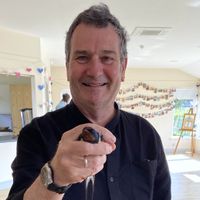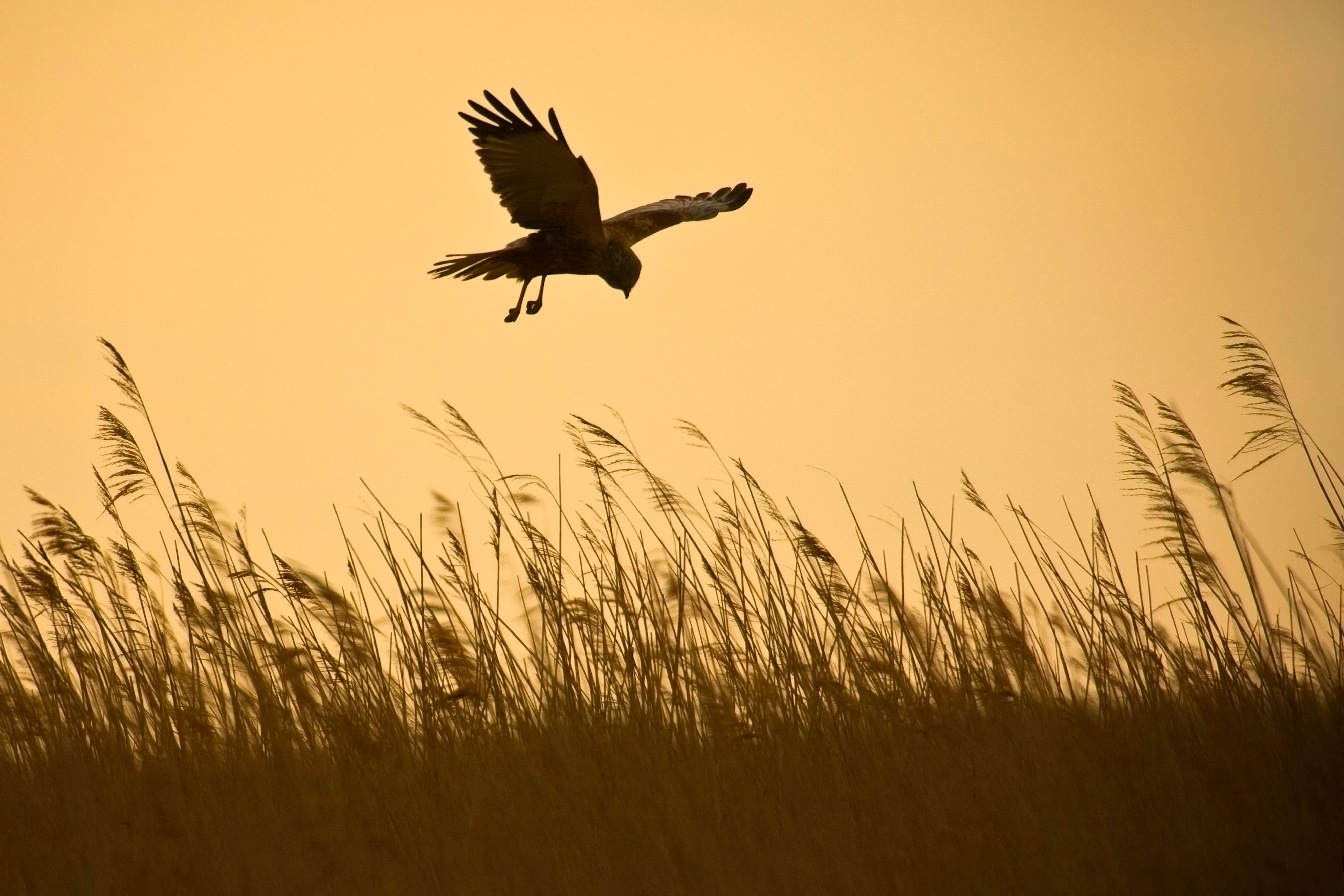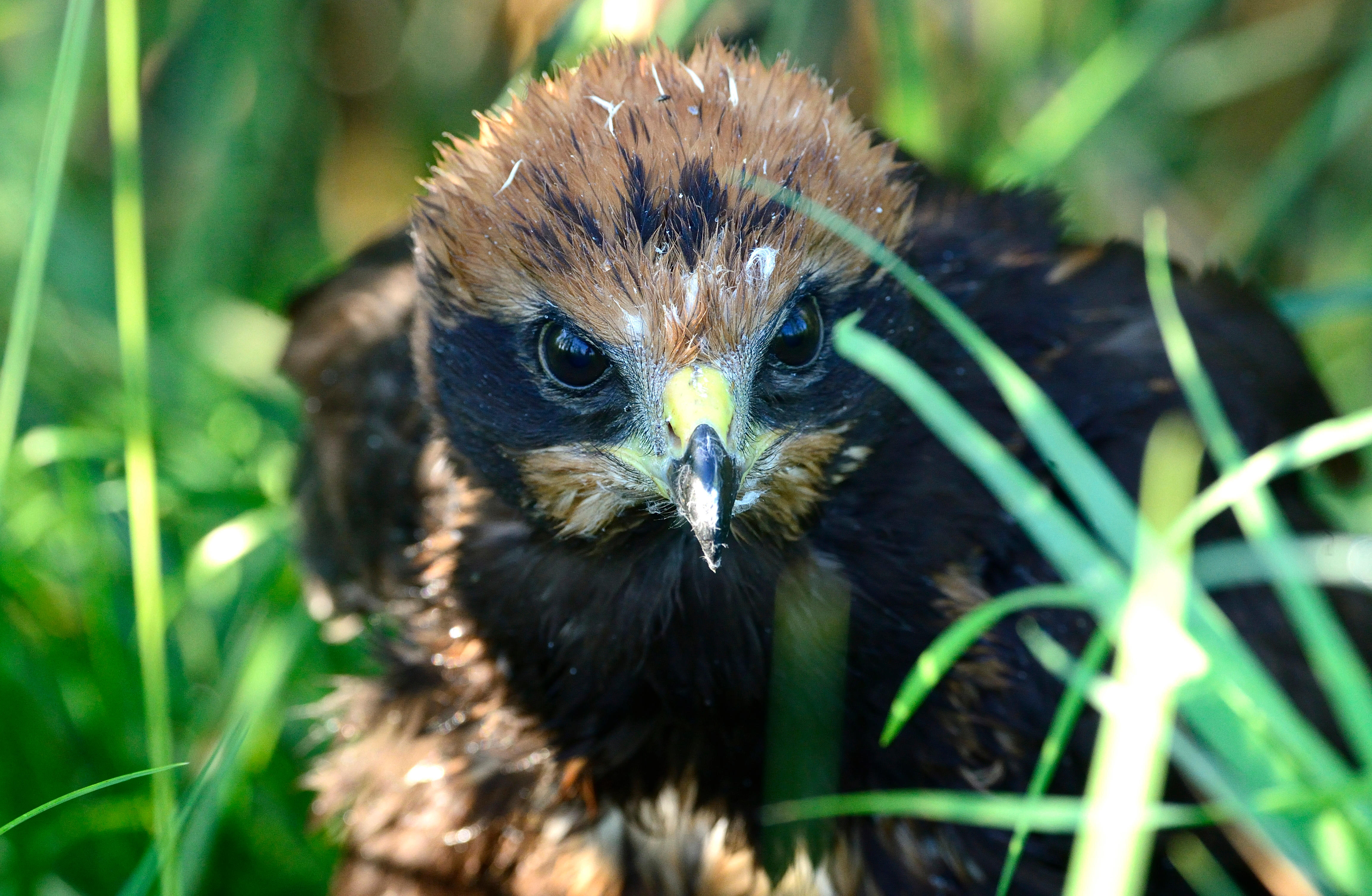Marsh Harriers: The wetland-loving bird that defied the odds to reconquer British skies
Mark Cocker's first ever sighting of the bird was at Minsmere, Suffolk, in 1976 — and he's never forgotten it.


I remember clearly my first ever sighting of this bird. All raptors are wonderful to watch in flight, but there was something truly special about a first marsh harrier (Circus aeruginosus). The signature manoeuvre is a slow, wandering, almost haphazard float on wings held above the level of the body, so that they create a shallow V in full span. The bird rocks and tilts in the breeze or as it shifts its path.
A hunting marsh harrier is entirely unfazed by strong wind and can almost never be rushed. The performance combines minimum effort and the slowest pace, yet with an aura of total control. Should it need to, a bird can drop to the ground like a steel weight or it can reach out with those ridiculously long, yellow legs to pluck some unwary prey clean from the air.
My first ever sighting was at Minsmere, Suffolk, in 1976. I know this partly because it was about the only place in Britain where such an enormously rare bird could be reliably encountered. Marsh harriers had actually made a steady comeback in England during the middle of the past century, only to be stricken again by indirect pesticide poisoning. Once these agrochemicals had been withdrawn, the birds began to recolonise for a second time. Given that there are now an estimated 1,200 breeding birds in this country, it is astonishing to recall that, in 1971, we could claim only a couple of pairs, at this same flagship RSPB reserve.

Marsh harriers hunt over arable farmland and often nest in patches of reed.
As the name suggests, this is a wetland-loving species, invariably found near low-lying water bodies and especially those with extensive reedbeds. Yet marsh harriers now also wander widely over arable farmland to hunt and even a small reed patch can be enough to tempt the birds to nest. This flexibility in breeding arrangement has allowed the British population to escape the old East Anglian stronghold.
The birds have spread down the east coast as far as Kent and then in a reverse direction through the Cambridge and Lincolnshire Fens. They have also advanced north into Yorkshire and now make forays to some Scottish east-coast sites. Further west, however, the species is a little more selective, with populations established on the Somerset Levels, the Dorset coast and at Leighton Moss in Lancashire, the RSPB’s premier reserve next to Morecambe Bay.
This is the biggest of our harriers and large females are roughly equal in size to a common buzzard, although the wings are narrower and the tail much longer. Her solidly deep-brown plumage is often offset by a distinctive, creamy tonsure over the crown. Males are more delicate and have complex patterning, but our eye is invariably drawn to the silvery-grey panels through the centre of his wings and then the flashing white underwings, which contrast with black wingtips.
The harrier’s hunting technique delivers a wide range of prey, but birds of all kinds feature strongly. It will tackle species as large as ducks and coots, but won’t scorn more modest fare such as frogs, rats or water voles. I recall vividly helping to ring a brood of young marsh harriers in north Norfolk. There they were: several wide-eyed chicks, heads crowned with white fuzz, gazing at us with expressions of absolute innocence, except that all about their nest platform were the green legs of old moorhen carcasses.
Exquisite houses, the beauty of Nature, and how to get the most from your life, straight to your inbox.

Harriers rest in communal roosts together at night.
A major shift in behaviour has occurred among our marsh harriers since the past century, when they were considered migrants, passing from Europe to Africa each autumn. Today, a large percentage remains throughout the year. This development may be simply another facet of climate change, but wintering harriers also have a characteristic habit that the large British increase might have brought into play.
Each evening, harriers habitually gather in communal roosts. In some places in northern India, these can be spectacular congregations involving thousands of birds. A British roost will be on a more modest scale, but it is never less than exciting. The site is often a reedbed and as the winter sun falls and the temperature drops, so dozens of harriers fly in from all sides. For a few minutes, they saunter on the breeze, circling or sparring with one another, and slowly, one by one, settle for the night below a horizon of sunlit reed.
Mark Cocker's latest book, ‘One Midsummer’s Day: Swifts and the Story of Life on Earth’, is out in paperback
This feature originally appeared in the July 23, 2025, issue of Country Life. Click here for more information on how to subscribe
Mark Cocker is a naturalist and multi-award-winning author of creative non-fiction. His last book, ‘One Midsummer’s Day: Swifts and the Story of Life on Earth’, is out in paperback. A new book entitled 'The Nature of Seeing' will be published next year by Jonathan Cape.
